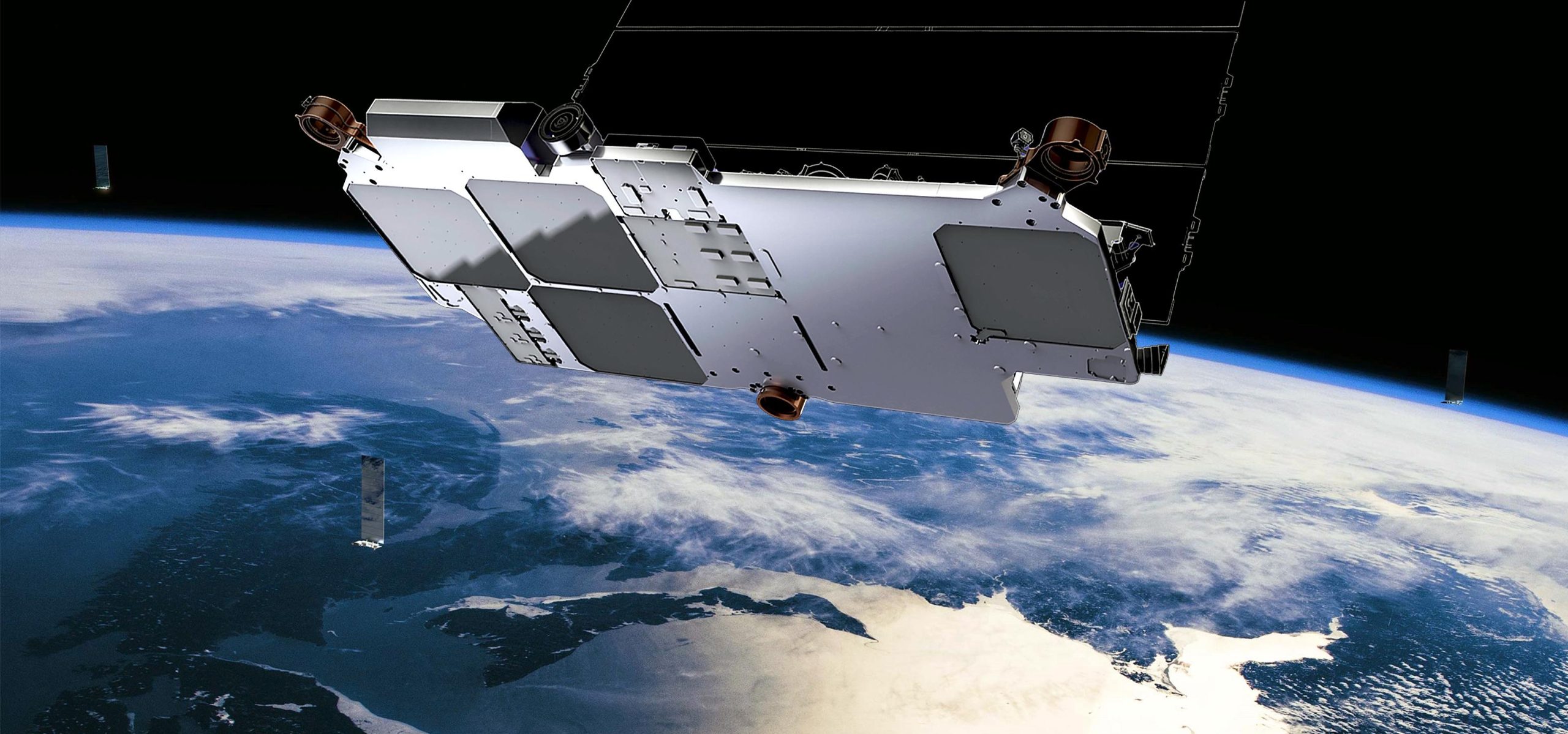
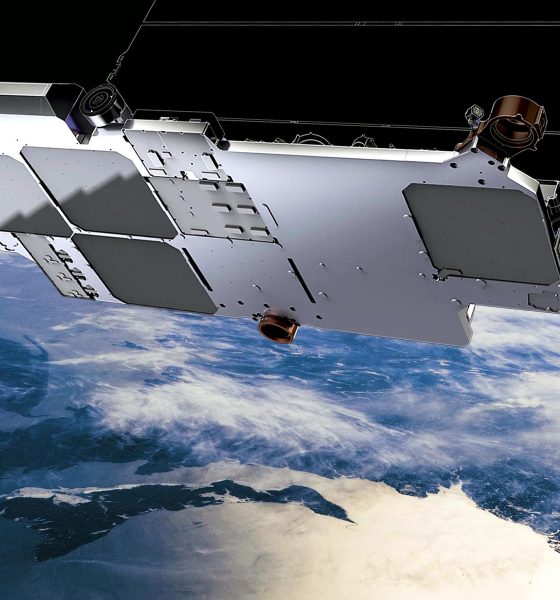
News
SpaceX Starlink satellite constellation aims to become world’s largest after next launch
In a sign of things to come next year, SpaceX’s next – and third – 60-satellite Starlink launch is officially on the books, and – if all goes as planned – could make the company the proud owner of the world’s largest operational satellite constellation.
On May 24th, Falcon 9 lifted off for the first time ever on a dedicated Starlink launch, placing 60 ‘v0.9’ prototype satellites in Low Earth Orbit (LEO), where they deployed solar arrays and fired up their own electric krypton thrusters to reach their operational ~550 km (340 mi) orbits. Of those 60 prototypes, several were intentionally deorbited while another handful suffered unintended failures, while 51 (85%) ultimately reached that final orbit and began operations.
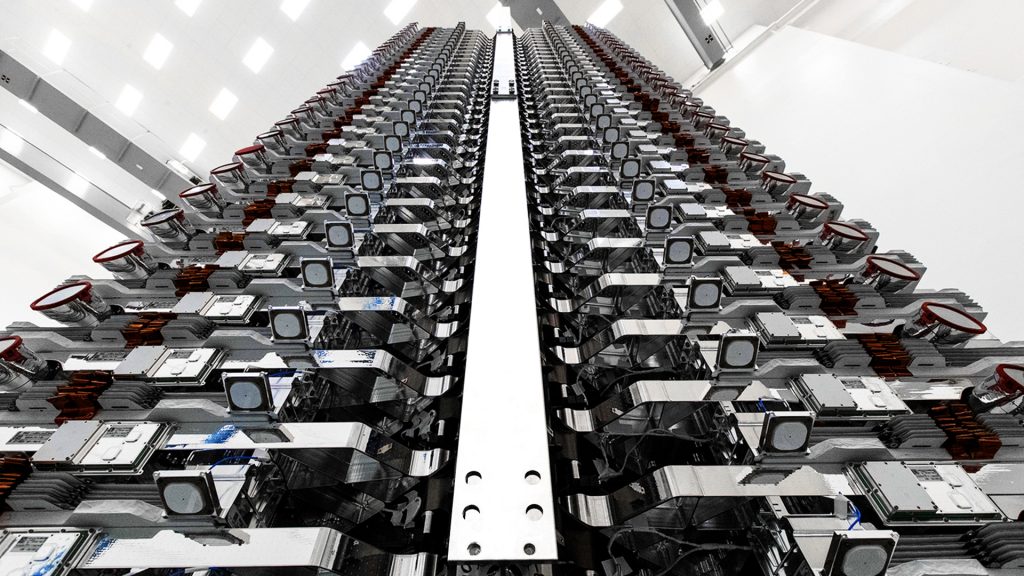
Previously expected in mid-October, unspecified delays pushed SpaceX’s next Starlink launch – deemed Starlink-1, the first launch of ‘v1.0’ satellites – into November. On November 11th, Falcon 9 B1048 and a flight-proven payload fairing lifted off with 60 more Starlink satellites, also marking the first time a Falcon 9 booster completed four orbital launches and the first operational reuse of a recovered fairing. Upgraded with four times the overall bandwidth, improved structures, new Ka-band antennas, and more steerable ‘beams’ on each of those antennas, those 60 Starlink v1.0 satellites rapidly came online and began raising their orbits.
This time around, SpaceX received FCC approval to test satellites at a substantially lower altitude of ~350 km (220 mi) and launched to a parking orbit of just 280 km (175 mi), ensuring that any debris or failed spacecraft will reenter Earth’s atmosphere in just a matter of months while also completely avoiding added risk to the International Space Station (ISS) (~400 km). After a brisk ten or so days of active propulsion, 55 of those 60 satellites have raised their orbits to ~350 km, while ~20 of those 55 appear to be aiming for a final altitude somewhat higher, likely the start of a separate orbital plane.

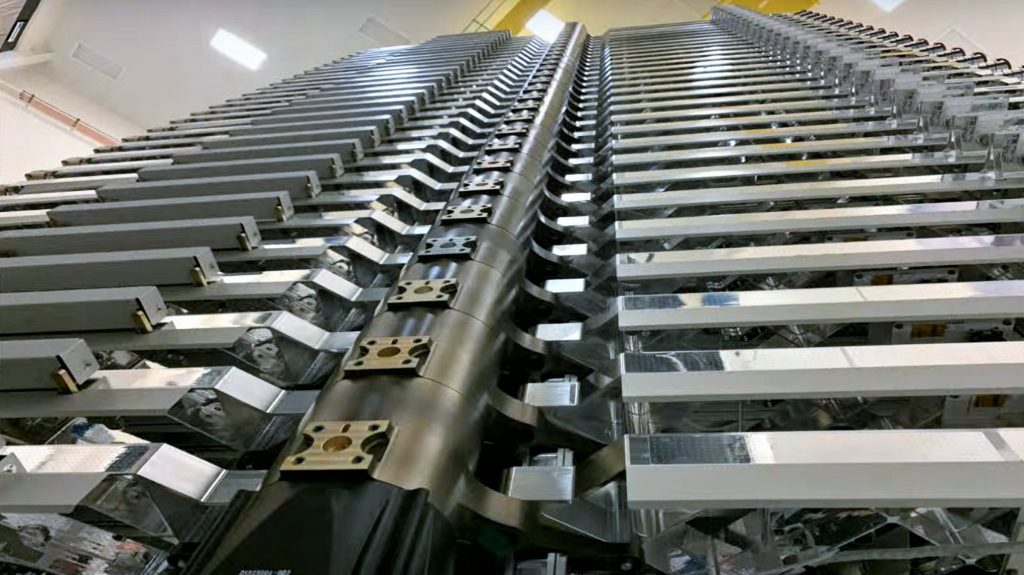
The moment that Starlink-1 satellites began to arrive and stabilize at their 350-km operational orbits, nearly all of SpaceX’s 50 operational v0.9 satellites began lowering their orbits, potentially signaling a move down to Starlink-1’s operational altitude, or even an intentional deorbit of the entire prototype tranche (far less likely).
From nothing to #1
The same day that several dozen Starlink-1 satellites finished the climb up to their operational orbits, SpaceX announced media accreditation for its next Starlink launch, presumed to be Starlink-2. According to SpaceX, the mission is targeted for the last two weeks of December 2019, a schedule that will tighten as it gets closer. Previously expected to launch in early November, as few as two weeks after Starlink-1, Starlink-2 has suffered similar delays but still appears to be on track for 2019.
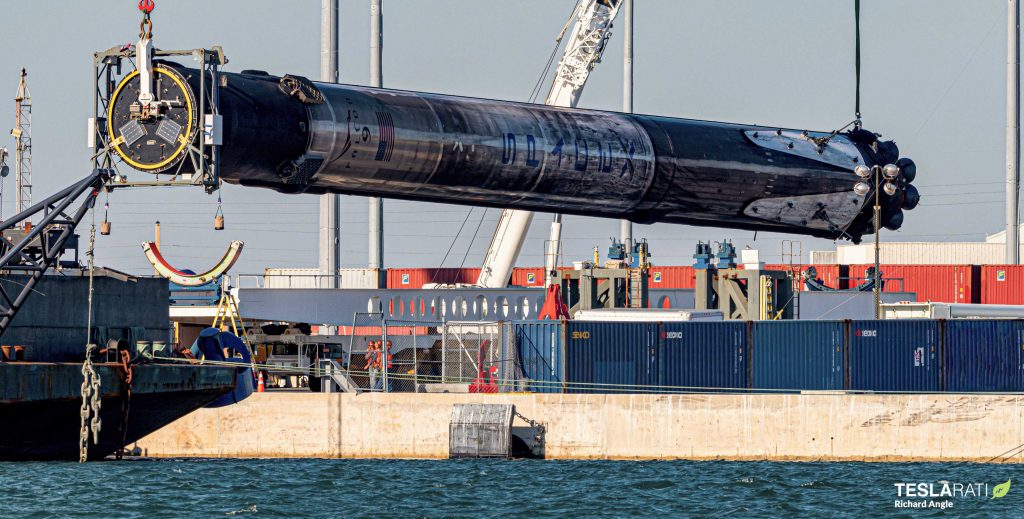
It’s assumed that Starlink-2 – like both dedicated missions preceding it – will launch 60 Starlink satellites. If that is, in fact, the case, the mission could mark a surprising but fully-expected milestone: with >170 functional satellites in orbit, SpaceX might become the proud owner of the world’s largest operational satellite constellation. Excluding two Tintin prototypes launched in February 2018 and 8 failed Starlink v0.9 spacecraft, a perfect Starlink-2 launch would raise SpaceX’s operational constellation to 172 satellites.
The only satellite operator anywhere close to those numbers is Planet Labs, an Earth observation analytics and satellite production company that has launched >400 satellites in its lifetime. Of those ~400 spacecraft, it’s believed that ~150 were operational as of October 2019 and Planet has another 12 Dove observation satellites scheduled to launch on November 27th. In simple terms, this means that SpaceX may become the world’s largest satellite operator after Starlink-2 and it all but guarantees that that will be the case after Starlink-3, a mission that will likely follow just weeks later.
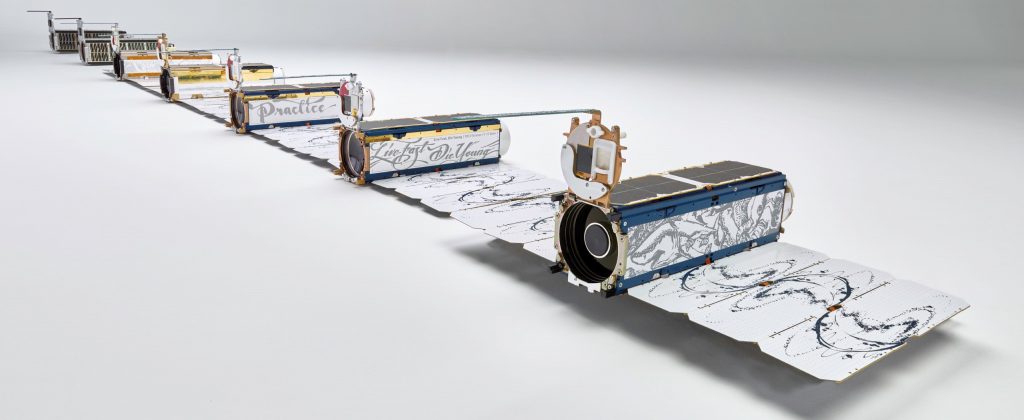

Once SpaceX passes that milestone, it’s all but guaranteed that Starlink will retain the title of world’s largest satellite constellation for the indefinite future. According to SpaceX COO and President Gwynne Shotwell, as many as 24 Starlink launches are planned for 2020, and SpaceX’s burgeoning Washington-state satellite factory may soon be capable of supporting the unprecedented volume of production such a cadence will require. Even assuming rocky development, it’s hard to picture SpaceX’s next-generation Starship rocket taking more than two additional years to be ready for routine orbital missions to LEO, each of which should be able to place 400 Starlink satellites in orbit.
OneWeb is by far the closest thing SpaceX has to a serious Starlink competitor and its first operational launch of ~30 satellites has recently suffered delays, moving from December to late-January or February 2020. Roughly monthly launches (each with ~30 satellites) will nominally follow that first launch. After Starlink-2 or Starlink-3, the only conceivable ways that SpaceX could ever lose the title of world’s largest satellite operator would require catastrophic failure(s) grounding Falcon 9 and/or Starship for >1 year or outright bankruptcy and liquidation, neither of which seem particularly likely.
Check out Teslarati’s Marketplace! We offer Tesla accessories, including for the Tesla Cybertruck and Tesla Model 3.

Elon Musk
Tesla’s Elon Musk: 10 billion miles needed for safe Unsupervised FSD
As per the CEO, roughly 10 billion miles of training data are required due to reality’s “super long tail of complexity.”

Tesla CEO Elon Musk has provided an updated estimate for the training data needed to achieve truly safe unsupervised Full Self-Driving (FSD).
As per the CEO, roughly 10 billion miles of training data are required due to reality’s “super long tail of complexity.”
10 billion miles of training data
Musk comment came as a reply to Apple and Rivian alum Paul Beisel, who posted an analysis on X about the gap between tech demonstrations and real-world products. In his post, Beisel highlighted Tesla’s data-driven lead in autonomy, and he also argued that it would not be easy for rivals to become a legitimate competitor to FSD quickly.
“The notion that someone can ‘catch up’ to this problem primarily through simulation and limited on-road exposure strikes me as deeply naive. This is not a demo problem. It is a scale, data, and iteration problem— and Tesla is already far, far down that road while others are just getting started,” Beisel wrote.
Musk responded to Beisel’s post, stating that “Roughly 10 billion miles of training data is needed to achieve safe unsupervised self-driving. Reality has a super long tail of complexity.” This is quite interesting considering that in his Master Plan Part Deux, Elon Musk estimated that worldwide regulatory approval for autonomous driving would require around 6 billion miles.
FSD’s total training miles
As 2025 came to a close, Tesla community members observed that FSD was already nearing 7 billion miles driven, with over 2.5 billion miles being from inner city roads. The 7-billion-mile mark was passed just a few days later. This suggests that Tesla is likely the company today with the most training data for its autonomous driving program.
The difficulties of achieving autonomy were referenced by Elon Musk recently, when he commented on Nvidia’s Alpamayo program. As per Musk, “they will find that it’s easy to get to 99% and then super hard to solve the long tail of the distribution.” These sentiments were echoed by Tesla VP for AI software Ashok Elluswamy, who also noted on X that “the long tail is sooo long, that most people can’t grasp it.”
News
Tesla earns top honors at MotorTrend’s SDV Innovator Awards
MotorTrend’s SDV Awards were presented during CES 2026 in Las Vegas.

Tesla emerged as one of the most recognized automakers at MotorTrend’s 2026 Software-Defined Vehicle (SDV) Innovator Awards.
As could be seen in a press release from the publication, two key Tesla employees were honored for their work on AI, autonomy, and vehicle software. MotorTrend’s SDV Awards were presented during CES 2026 in Las Vegas.
Tesla leaders and engineers recognized
The fourth annual SDV Innovator Awards celebrate pioneers and experts who are pushing the automotive industry deeper into software-driven development. Among the most notable honorees for this year was Ashok Elluswamy, Tesla’s Vice President of AI Software, who received a Pioneer Award for his role in advancing artificial intelligence and autonomy across the company’s vehicle lineup.
Tesla also secured recognition in the Expert category, with Lawson Fulton, a staff Autopilot machine learning engineer, honored for his contributions to Tesla’s driver-assistance and autonomous systems.
Tesla’s software-first strategy
While automakers like General Motors, Ford, and Rivian also received recognition, Tesla’s multiple awards stood out given the company’s outsized role in popularizing software-defined vehicles over the past decade. From frequent OTA updates to its data-driven approach to autonomy, Tesla has consistently treated vehicles as evolving software platforms rather than static products.
This has made Tesla’s vehicles very unique in their respective sectors, as they are arguably the only cars that objectively get better over time. This is especially true for vehicles that are loaded with the company’s Full Self-Driving system, which are getting progressively more intelligent and autonomous over time. The majority of Tesla’s updates to its vehicles are free as well, which is very much appreciated by customers worldwide.
Elon Musk
Judge clears path for Elon Musk’s OpenAI lawsuit to go before a jury
The decision maintains Musk’s claims that OpenAI’s shift toward a for-profit structure violated early assurances made to him as a co-founder.

A U.S. judge has ruled that Elon Musk’s lawsuit accusing OpenAI of abandoning its founding nonprofit mission can proceed to a jury trial.
The decision maintains Musk’s claims that OpenAI’s shift toward a for-profit structure violated early assurances made to him as a co-founder. These claims are directly opposed by OpenAI.
Judge says disputed facts warrant a trial
At a hearing in Oakland, U.S. District Judge Yvonne Gonzalez Rogers stated that there was “plenty of evidence” suggesting that OpenAI leaders had promised that the organization’s original nonprofit structure would be maintained. She ruled that those disputed facts should be evaluated by a jury at a trial in March rather than decided by the court at this stage, as noted in a Reuters report.
Musk helped co-found OpenAI in 2015 but left the organization in 2018. In his lawsuit, he argued that he contributed roughly $38 million, or about 60% of OpenAI’s early funding, based on assurances that the company would remain a nonprofit dedicated to the public benefit. He is seeking unspecified monetary damages tied to what he describes as “ill-gotten gains.”
OpenAI, however, has repeatedly rejected Musk’s allegations. The company has stated that Musk’s claims were baseless and part of a pattern of harassment.
Rivalries and Microsoft ties
The case unfolds against the backdrop of intensifying competition in generative artificial intelligence. Musk now runs xAI, whose Grok chatbot competes directly with OpenAI’s flagship ChatGPT. OpenAI has argued that Musk is a frustrated commercial rival who is simply attempting to slow down a market leader.
The lawsuit also names Microsoft as a defendant, citing its multibillion-dollar partnerships with OpenAI. Microsoft has urged the court to dismiss the claims against it, arguing there is no evidence it aided or abetted any alleged misconduct. Lawyers for OpenAI have also pushed for the case to be thrown out, claiming that Musk failed to show sufficient factual basis for claims such as fraud and breach of contract.
Judge Gonzalez Rogers, however, declined to end the case at this stage, noting that a jury would also need to consider whether Musk filed the lawsuit within the applicable statute of limitations. Still, the dispute between Elon Musk and OpenAI is now headed for a high-profile jury trial in the coming months.








